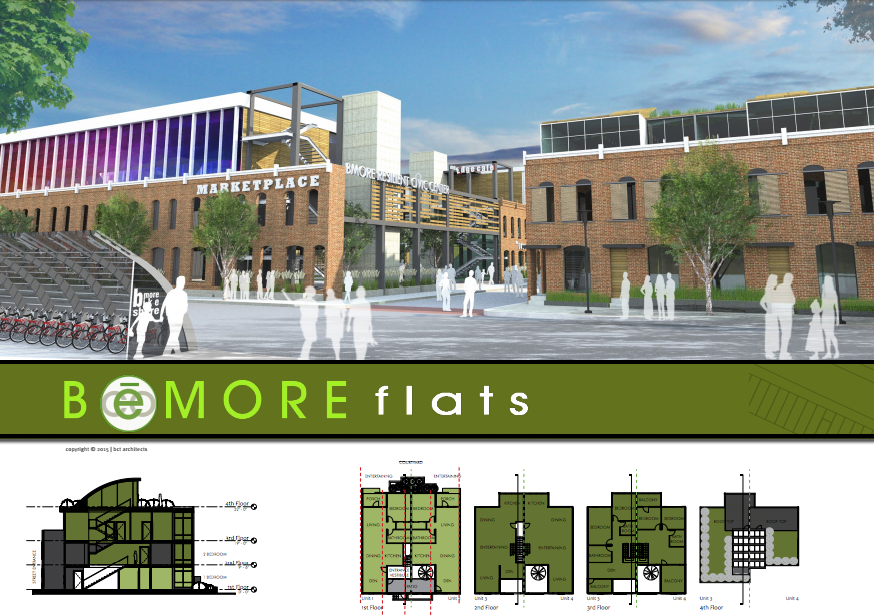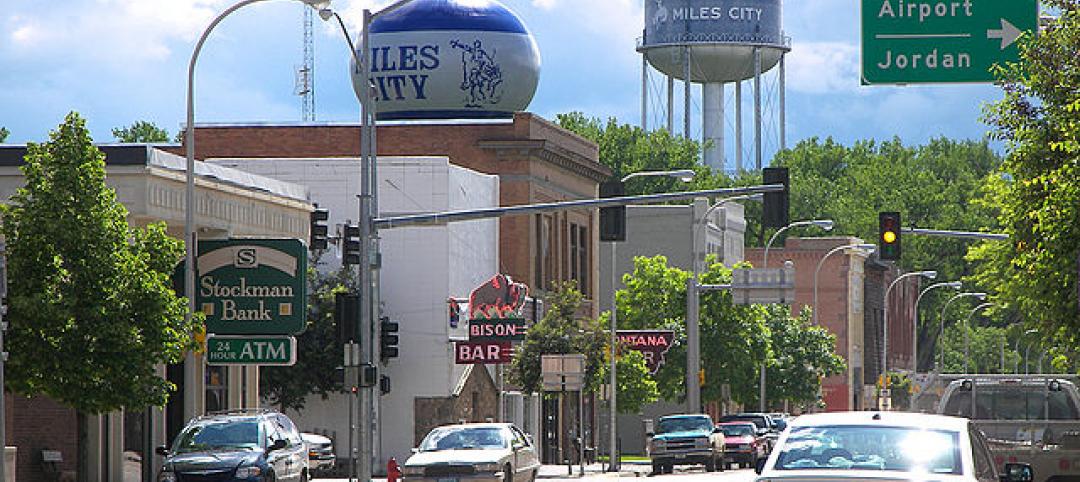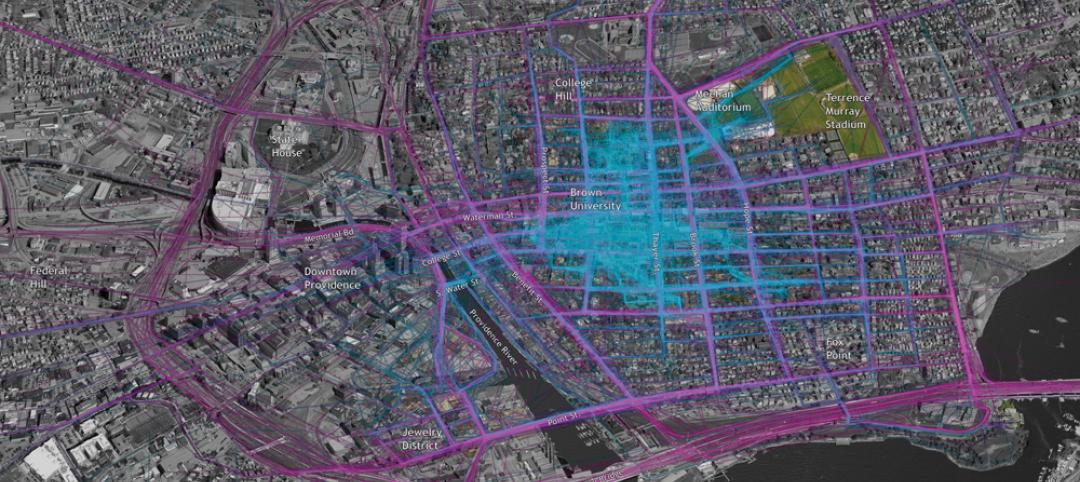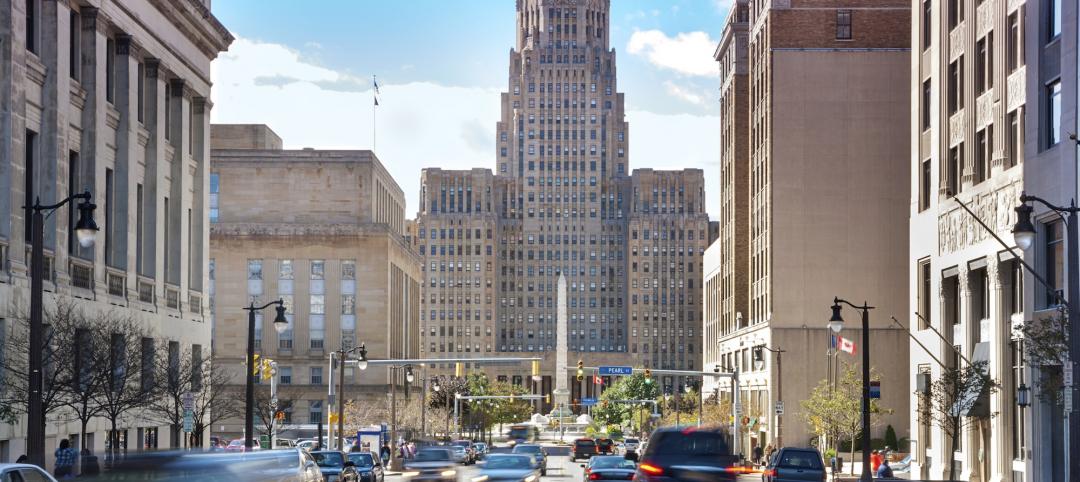Baltimore’s chapter of the AIA announced the winners of its B-More | Resilient Rowhouse Design Competition, where entrants provide environmental design solutions for the city’s vacant rowhouses in the Broadway East Neighborhood.
The competition was hosted by Baltimore City Planning Department, Office of Housing and Community Development, Office of Sustainability, and the Morgan State University School of Architecture + Planning. Four winners were chosen, one for each of these categories: Most Resilient Concept, Most Feasible Design, Most Innovative Design, and, the main category, Most Resilient Design.
A team of students from Virginia Tech and local architects from Brown Craig Turner submitted the BeMORE Flats design, which won the Most Resilient Design award. Their plan included green roofs, pedestrian-friendly streets, reclaimed alleys and courtyards, rain gardens, and salvaged wood decking. Plans called for one- and two-bedroom units, with community facilities.
“Although the competition focused on a specific neighborhood, winning designs presented solutions that can be repeated across Baltimore,” AIA Baltimore said in a statement. “To that extent, Morgan State faculty and students plan to analyze the constructability and cost of implementing the winning designs and present their findings to the city. The sooner the urban fabric of Baltimore can adapt to environmental and social challenges, the more resilient the city can be.”
The competition also had three honorable mentions and received more than 20 entries. The jury was made up of city representatives and architecture professionals and educators. AIA Baltimore’s website has a listing of all the entrants and their project plans.
Baltimore has a wide range of rowhouse styles that have been built since the 1700s. Many rowhouses, however, are vacant and have been torn down.
Related Stories
Smart Buildings | May 21, 2015
Resiliency and climate change: Dual perspectives from designers at HDR
Two geographies, two perspectives, one conclusion: from Minnesota to Miami, resiliency matters, write HDR's Bob Beduhn and Lynette Cardoch.
Smart Buildings | May 1, 2015
FEMA to require states to evaluate risks posed by climate change
The aim is for states to do a better job planning for natural disasters they are likely to face in a warming world.
Smart Buildings | Jan 7, 2015
NIBS report: Small commercial buildings offer huge energy efficiency retrofit opportunities
The report identifies several barriers to investment in such retrofits, such as the costs and complexity associated with relatively small loan sizes, and issues many small-building owners have in understanding and trusting predicted retrofit outcomes.
Smart Buildings | Jan 7, 2015
Best practices for urban infill development: Embrace the region's character, master the pedestrian experience
If an urban building isn’t grounded in the local region’s character, it will end up feeling generic and out-of-place. To do urban infill the right way, it’s essential to slow down and pay proper attention to the context of an urban environment, writes GS&P's Joe Bucher.
BIM and Information Technology | Dec 28, 2014
The Big Data revolution: How data-driven design is transforming project planning
There are literally hundreds of applications for deep analytics in planning and design projects, not to mention the many benefits for construction teams, building owners, and facility managers. We profile some early successful applications.
Smart Buildings | Dec 3, 2014
Arup research explores urban infrastructure design in 2050
The report projects a future where highways will be made from self-healing, glow-in-the-dark materials and will be governed by sophisticated technologies that communicate with cars, road infrastructure, and GPS systems.
Smart Buildings | Oct 30, 2014
Energy Department pledges $9 million for energy efficiency improvements on commercial buildings
The U.S. Dept. of Energy will spend $9 million to encourage investments in energy-saving technologies that can be tested and deployed in offices, shops, restaurants, hospitals, hotels and other types of commercial buildings.
Smart Buildings | Oct 29, 2014
SCAPE’s 'living breakwaters' resiliency development wins 2014 Buckminster Fuller Challenge
New York-based landscape architecture firm SCAPE won the Buckminster Fuller Institute’s 2014 Fuller Challenge, billed as socially responsible design’s highest award.
Smart Buildings | Jun 8, 2014
Big Data: How one city took control of its facility assets with data
Over the past few years, Buffalo has developed a cutting-edge facility management program to ensure it's utilizing its facilities and operations as efficiently, effectively, and sustainably as possible.
Smart Buildings | May 19, 2014
New York should forget about surge barriers for most cost-effective resiliency plan, say researchers
Massive storm surge barriers would be too costly for the potential benefit to protect New York City from violent storms like Hurricane Sandy, researchers say.
















